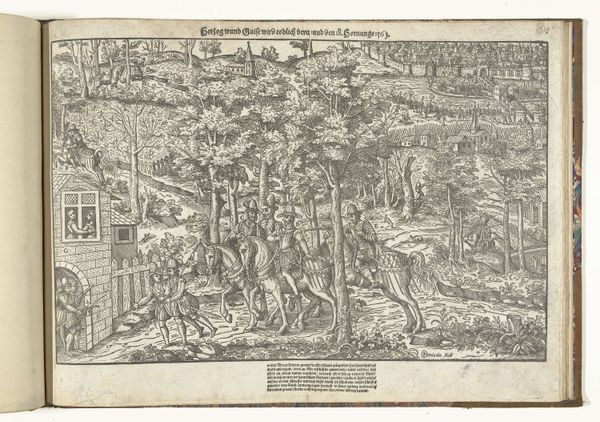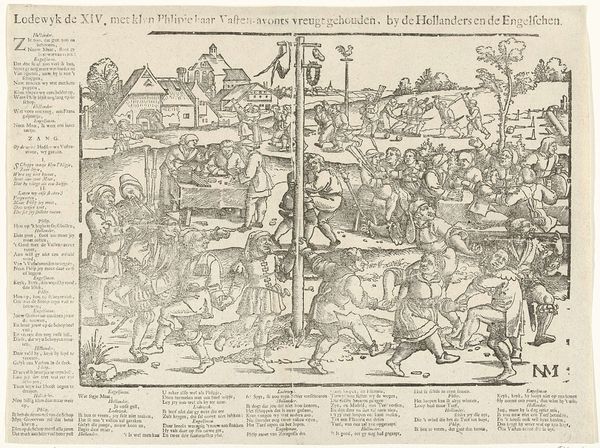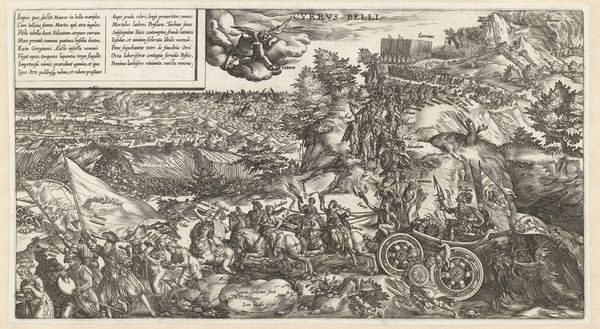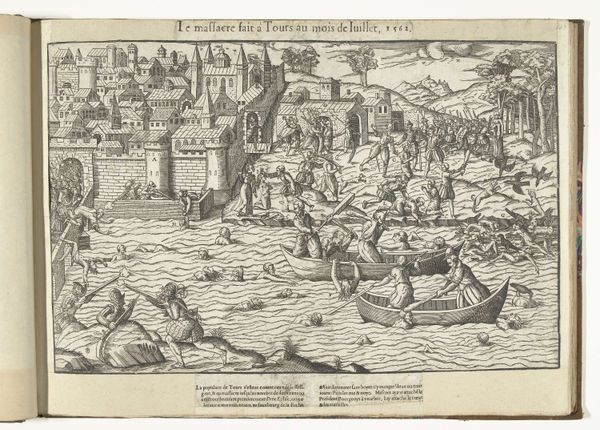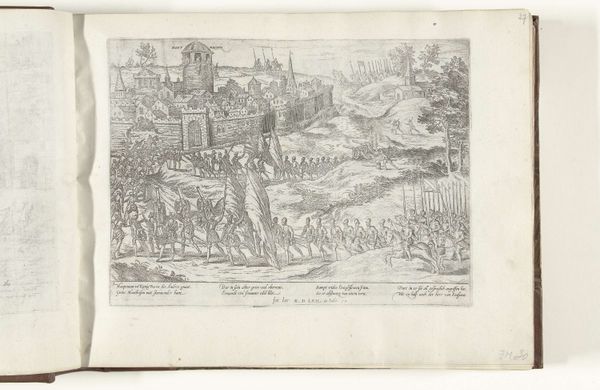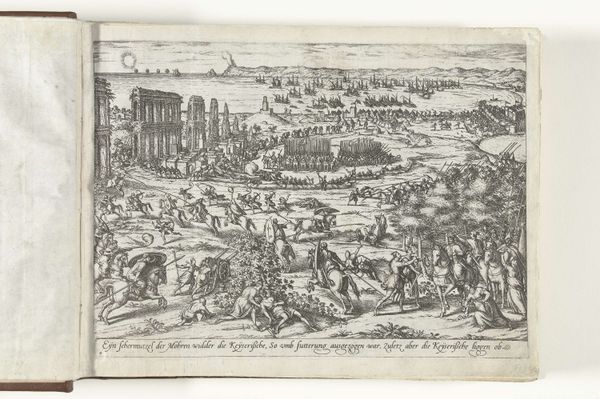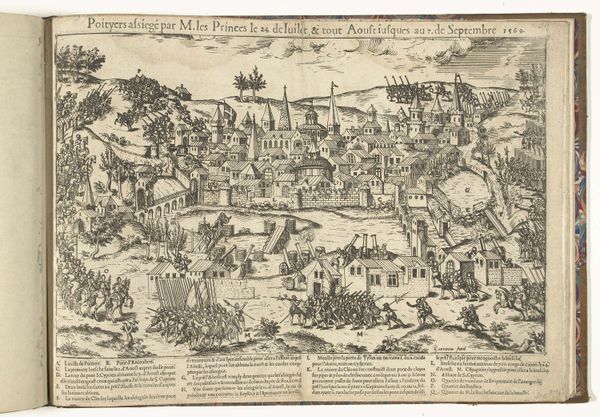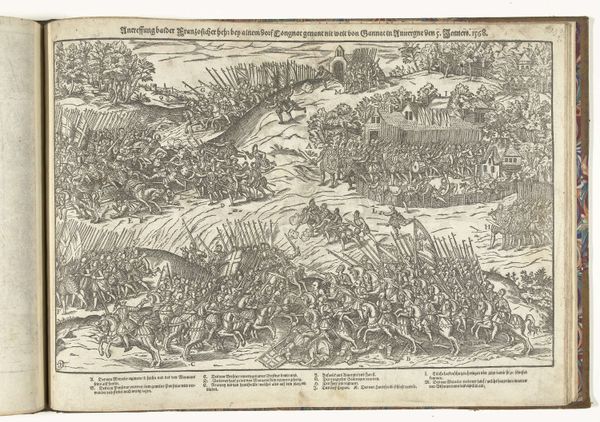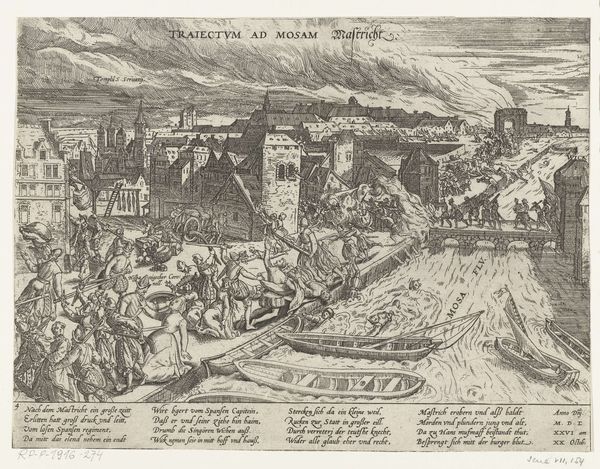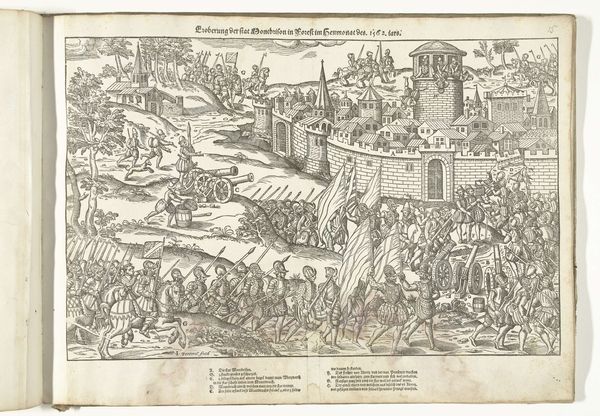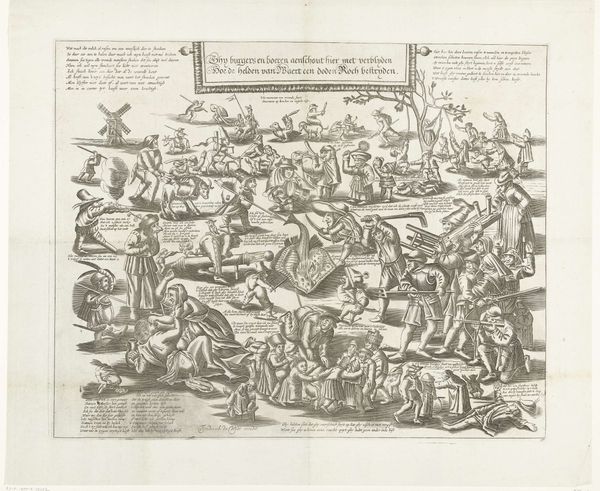
print, engraving
#
narrative-art
# print
#
history-painting
#
italian-renaissance
#
engraving
Dimensions: height 374 mm, width 488 mm
Copyright: Rijks Museum: Open Domain
Editor: This print, "Discovery of the Amboise Conspiracy, 1560" by Jacques Tortorel from 1570, has such an interesting, almost chaotic composition. It feels very crowded, but detailed. The landscape feels so… deliberate. What’s your take on it? What jumps out at you? Curator: Well, immediately I’m struck by how it pulls you in, doesn't it? All these tiny figures, like little players on a grand stage. It's almost dreamlike, how they seem suspended between action and tableau. Given that it’s about uncovering a conspiracy, that crowded feel—the sense of everyone being a potential participant, guilty or innocent—feels absolutely right. Notice how the landscape itself seems to conspire, too. All those hills, almost like peering eyes! The level of details from all directions—does this affect how you, as a viewer, take on this visual narrative? Editor: Definitely. It's a bit overwhelming, honestly. There’s so much to unpack! The figures are detailed and dense but seem stiff at the same time, like a collection of miniature, detailed figurines frozen in time, as if one wrong move will shatter their conspiracy narrative. Curator: Precisely. Think about this print in its time – it's not just information; it's practically *news*. Visual news! And who were these made for? To fuel those anxieties, perhaps? This conspiracy, the politics... all boiling over, even rendered in monochrome! But more than all of that I believe is the artist’s deep understanding of human nature. After all, is that what the artist captures in its truest essence? Editor: So true. I guess seeing it like that…makes it so much more than just a historical document. Curator: It's a glimpse into the past. A mirror reflecting how much--and how little--we've changed, really.
Comments
No comments
Be the first to comment and join the conversation on the ultimate creative platform.
